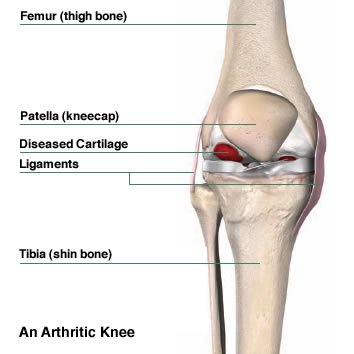Knee Pain: What You Need To Know
The knee is the largest joint in the body and is central to nearly every routine activity
The knee joint is formed by the ends of three bones: the lower end of the thigh bone (femur), the upper end of the shin bone (tibia), and the kneecap (patella). Thick, tough tissue bands called ligaments connect the bones and stabilize the joint. A smooth, plastic-like lining called cartilage covers the ends of the bones and prevents them from rubbing against each other, allowing for flexible and nearly frictionless movement. Cartilage also serves as a shock absorber, cushioning the bones from the forces between them. Finally, a soft tissue called synovium lines the joint and produces a lubricating fluid that reduces friction and wear.

Arthritis: The Leading Cause of Knee Pain
One of the most common causes of knee pain and loss of mobility is the wearing away of the joint’s cartilage lining. When this happens, the bones rub against each other, causing significant pain and swelling — a condition known as osteoarthritis. Trauma or direct injury to the knee can also cause osteoarthritis. Without cartilage there is no shock absorption between the bones in the joint. This allows stress to build up in the bones and contributes to pain.

